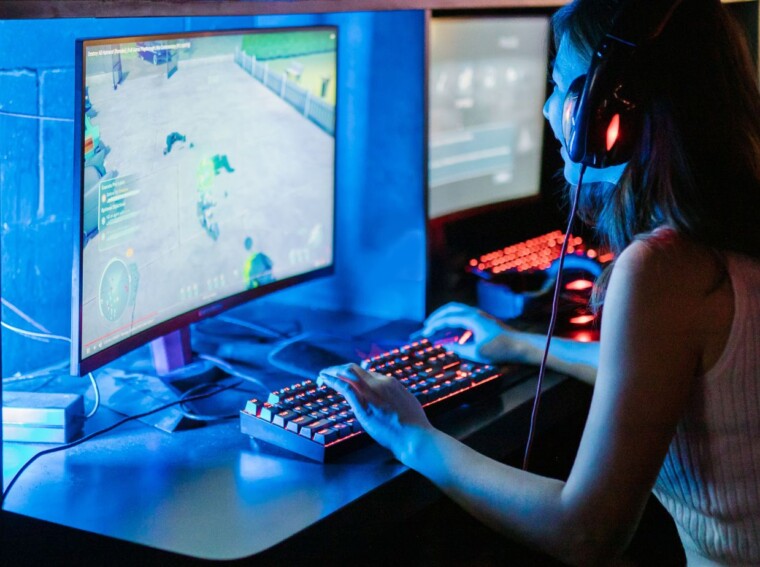In the ever-evolving world of gaming, where moments of brilliance can be as fleeting as they are thrilling, the ability to capture these instances is priceless. Enter the realm of screen recording – a tool that allows gamers to immortalize their gameplay in high fidelity. While there are numerous options available, finding a free screen recorder that does not compromise on quality can be a challenge.
This guide is dedicated to navigating you through the intricacies of recording your gameplay, ensuring that every pixel of your prowess is preserved in pristine clarity. From selecting the right equipment to mastering the settings that guarantee a lossless capture, we embark on a journey to elevate your gaming content to its deserved pedestal.
What is Screen Recording?
Screen recording transcends mere digital capture; it is the art of archiving your digital achievements, strategies, and the sheer joy of gaming. It’s about creating a legacy of your virtual triumphs and learning from your defeats. This feature is indispensable for content creators, competitive gamers, and casual players alike, offering a window for the world to witness the game through your eyes.
Benefits of High-Quality Gameplay Recording
The advantages of high-quality gameplay recording stretch beyond the surface level of crisp visuals and seamless playback. It plays a pivotal role in building a content creator’s reputation, providing educational content, and fostering a community around shared gaming experiences. Quality recordings can captivate audiences, enhance viewer engagement, and even open doors to professional opportunities in the gaming ecosystem.
Equipment and Software
Choosing the Right Hardware
The foundation of any good gameplay recording starts with robust hardware. The aim is to ensure your gaming rig or console is not just capable of running the latest titles but is also equipped to handle the additional load of recording software. Upgrading your system’s RAM, investing in a faster SSD, or opting for a more powerful graphics card can make a significant difference in your recording quality and performance.
Selecting Screen Recording Software
The heart of your recording setup is the software you choose. For those on a budget, a plethora of free screen recorder options exist, balancing functionality with user-friendliness. OBS Studio stands out for its open-source nature and deep customization, while Nvidia ShadowPlay and AMD ReLive offer hardware-accelerated recording for their respective graphics card users. For console gamers, while built-in options exist, external capture devices provide the flexibility and quality required for serious content creation.
AI Text-to-Video technology involves the use of artificial intelligence algorithms to convert written text into visually engaging video content. This process typically involves natural language processing to understand the text, followed by generating appropriate visuals, audio, and animations. The resulting videos can be an effective way to communicate ideas, stories, or information in a more engaging and accessible manner, making it a valuable tool for various applications such as education, marketing, and entertainment.
Setting Up for Recording
Software Settings
Diving into the myriad of settings available in recording software can be daunting, yet mastery over these is crucial. Adjusting the resolution to match your display while balancing frame rates can make your content stand out. Choosing the right codec is equally important, as it affects not only quality but also file size and compatibility.
Hardware Configuration
Beyond internal specs, external hardware like dedicated microphones for crystal clear commentary, and high-quality webcams for personalizing your content, can elevate your recordings.

For console gamers, a reliable capture card is indispensable, acting as a bridge between your console’s output and your PC, allowing for high-quality recording and streaming.
Recording Techniques
In-game Settings Optimization
Fine-tuning your game settings is a delicate dance between visual fidelity and system performance. High graphics settings can offer breathtaking visuals but may hamper performance when recording. Finding a balance ensures both a smooth gaming and viewing experience.
Managing Game Performance
Recording in high definition requires significant system resources. Closing unnecessary applications, adjusting your PC’s power settings for optimal performance, and monitoring your system’s temperature can prevent performance bottlenecks and ensure a smooth recording process.
Post-Recording Processing
Editing for Quality
Post-processing is where your recordings transform into polished content. Editing software allows you to cut out unnecessary parts, add overlays, and adjust audio levels. For those seeking to perfect their videos, understanding the basics of color correction and sound mixing can make your content stand out.
File Compression Without Losing Quality
The final hurdle in content creation is managing file sizes. Large, high-quality files are cumbersome to store and upload. Learning to compress files without significant quality loss is essential; utilizing modern codecs and understanding bitrates can significantly reduce file sizes while maintaining visual fidelity.
Sharing Your Gameplay
Platforms for Sharing
Choosing the right platform to share your gameplay is crucial. Each platform has its own audience and content expectations. YouTube offers a broad audience, while Twitch caters to live-streaming aficionados. Understanding the nuances of each can help tailor your content to the expected norms.
Optimizing for Platforms
Each platform has specific requirements for video, from resolution and frame rates to encoding settings. Tailoring your content to meet these specifications ensures the best possible viewing experience for your audience. It also aids in maximizing the reach and engagement of your videos, as optimized content is more likely to be promoted by the platform’s algorithms.
Conclusion
The journey to capturing high-quality gameplay is both technical and creative, blending the right hardware and software with a content creator’s unique flair. By understanding and implementing the strategies outlined in this guide, you can ensure your gameplay recordings are not just preserved but showcased in the best light possible.

Remember, the goal is not only to capture your gaming moments but to share your adventures, skills, and stories with a wider audience. Whether you’re aiming to entertain, educate, or inspire, the quality of your recordings plays a pivotal role in your content’s success.

